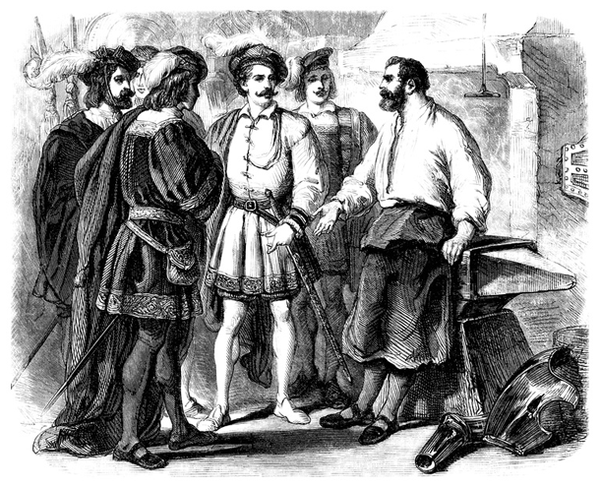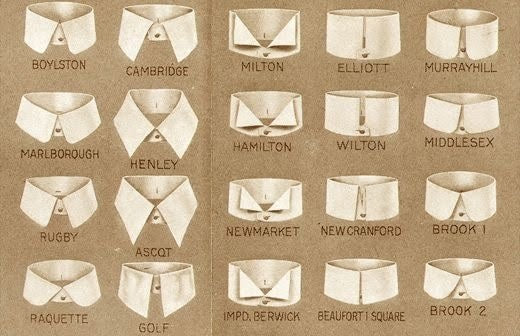The classic men's shirt has become an indispensable part of every wardrobe, men and women appreciate its symbolism: elegance, sovereignty, independence. The shirt accompanies us during important moments like job interviews, the crucial meeting or a wedding. However how did the timeless classic come into being? Following a small biography about the arguably most important garment of a man.
Onto the skin
The shirt worked its way up in the course of time. Its predecessors existed already in the year 1’000 B.C., but until the end of the 19th century they served as underclothing only. The Old High German word ‘Hemedi’ actually meant skin. At the beginning it reached to the ground, was without any buttons and was worn as underwear or as pyjama – hence a nightshirt in its original form. In the beginning, the man needed to slip into the button-less shirt. In the middle ages, first forms of lace adornments and exchangeable collars appeared. In the Victorian era the white shirt became a symbol of status (1837-1901). The pure color did not only reveal a good job, where the man did not have to get dirty, but also was a sign of having enough money to regularly let the shirts be cleaned.
The first models were produced out of linen – only with the industrial revolution, at the end of the 18th century, the softer cotton became less expensive and therefore a more popular shirt material.

Against the collar
The history of the shirt can also be read off its collar. During the middle age they came in a thin cuff-look, while the extremely stiff collar was a symbol of the high society in 1840 – the harder and higher the collar, the more exquisite the shirt. In its most extreme form the collar reached up to the man’s ears. The less privileged without a big budget for the tailor combined the upper shirt with a detachable collar by himself.
Famous was also the wing collar. In German it got its name, ‘father murderer’, due to the sharp collar-edges, which frequently caused skin crack on the neck. While the shirt used to be worn with a scarf, it stunted, after the emergence of the downwards bent collar, to a symbolic bow tie.
During the First World War, softer shirts with attached collars were given to the soldiers. The man got used to this comfortable style and triggered a heated debate after the war between conservative stiff collar wearers and the new soft collar fans. Both forms are still existing today – whereas the soft, overlying collars can be seen on casual shirts and the business shirt’s stiff colors gained some comfort.

Until the last shirt
In the 19th century the shirt was tailored closer to the body. Until the end of the 19th century, the white shirt was a symbol of wealth - and it is still considered to be the most elegant shape today. At the beginning of the 20th century, today's shirt with a continuous button placket on the front appeared and the times of the pull-on shirt were finally over.
Incidentally, the breast pocket is an invention of the 1960s; With the extinction of the vest under the suit, a replacement for storage had to be found.
The shirt is probably one of the oldest items of clothing that is still hanging in our closet today. Due to its changeability and the diverse processing options, the choice of fabric and, finally, the multitude of styling variants, the shirt has changed its shape, but has never gone out of style.




